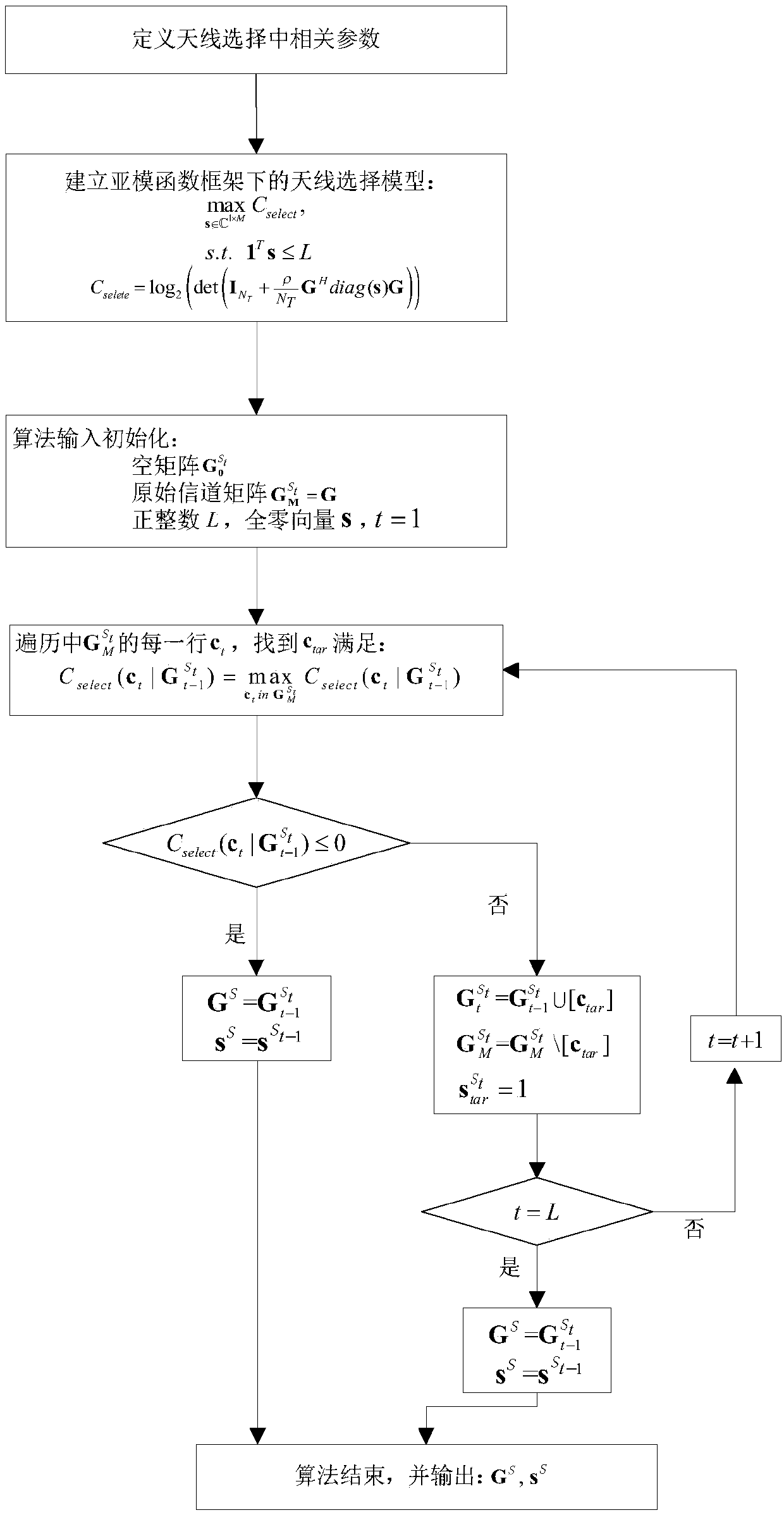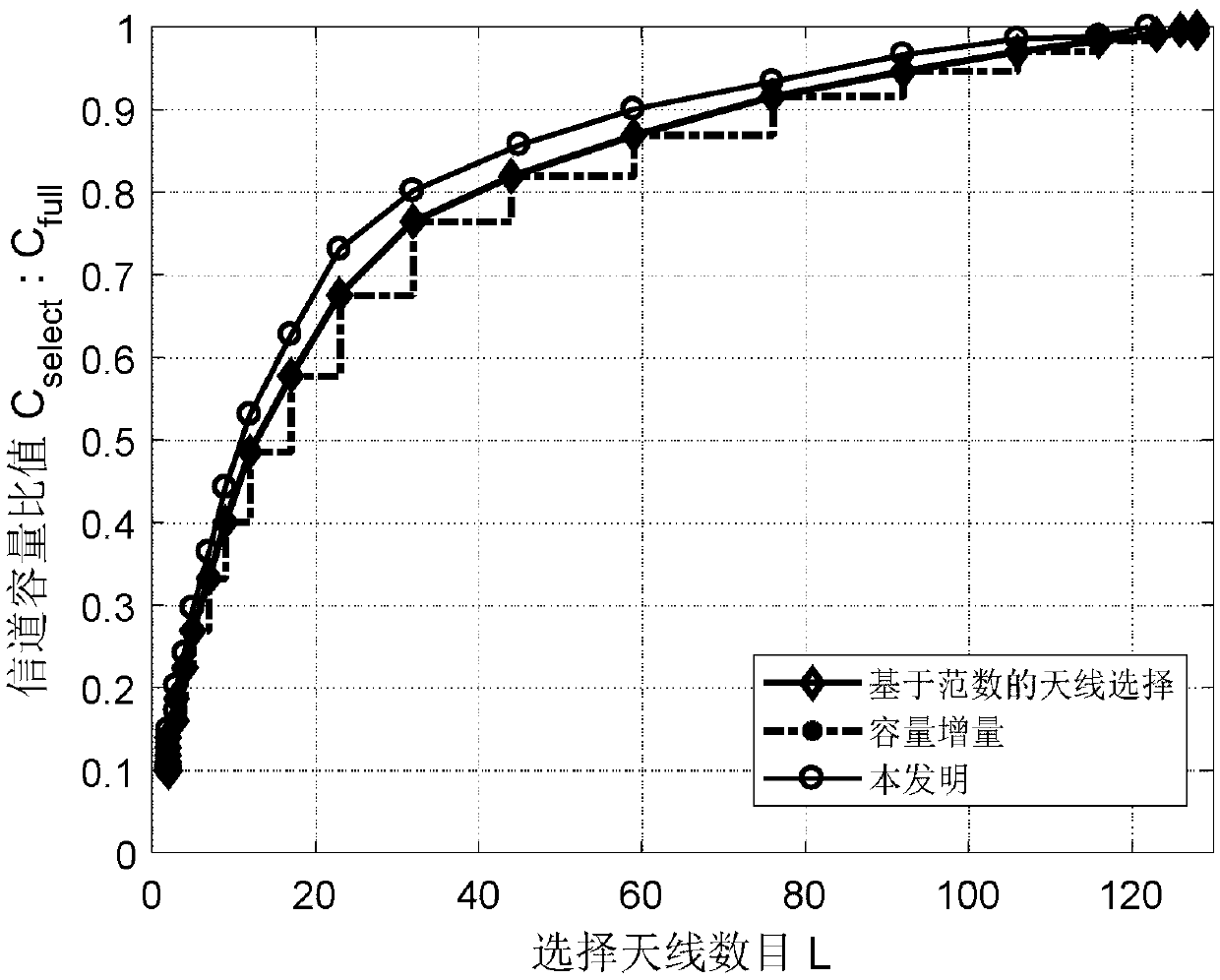Antenna selection method based on sub-mode function for large-scale multiple input multiple output scenario
An antenna selection, multi-input technology, applied in diversity/multi-antenna systems, transmission systems, radio transmission systems, etc., can solve the problems of unguaranteed system channel capacity performance, high antenna complexity, and high complexity, and achieve intuitive analysis. Ideas, calculations are simple and intuitive, low-complexity effects
- Summary
- Abstract
- Description
- Claims
- Application Information
AI Technical Summary
Problems solved by technology
Method used
Image
Examples
Embodiment 1
[0025] In a large-scale multiple-input multiple-output system, a large number of antennas are configured at the transmitting (or receiving) end, which can provide diversity gain to reduce the bit error rate and improve service quality or provide multiplexing gain to improve service efficiency, which brings about an improvement in the performance of the communication system . In practical applications, configuring a large number of antennas will be limited by practical problems such as hardware cost and signal processing complexity. The radio frequency link is proportional to the number of antennas. Although the antenna itself is relatively cheap, each radio frequency link in the antenna system includes communication devices such as low noise amplifiers, up (down) converters, and digital-to-analog (analog-to-digital) converters. , the price is high; at the same time, the complexity of system processing is also proportional to the number of antennas. On the premise of maintaini...
Embodiment 2
[0050] The antenna selection method based on the submodular function in a large-scale multi-input and output scene is the same as that in Embodiment 1, and the antenna selection model under the framework of the submodular function is established in step (2) of the present invention, specifically including:
[0051] (2a) Use the channel capacity formula to express the total channel capacity C of the original channel matrix G full :
[0052]
[0053] in, Indicates that the dimension is N R The identity matrix of N R =128,N T = 12 respectively represents the number of receiving antennas (base stations) and the number of transmitting antennas (single-antenna users) in the uplink system, ρ is the signal-to-noise ratio, det(·) represents the determinant, (·) H Represents the conjugate transpose of a matrix.
[0054] The present invention is applied to reduce the processing complexity of a large-scale multiple input and output system. If all antennas are used as the antennas...
Embodiment 3
[0066] The antenna selection method based on the submodular function in a large-scale multiple input and output scenario is the same as that in Embodiment 1-2. The standard for determining the greedy selection method in step (3) is to select the antenna based on the maximization of the channel capacity increment, specifically including Have:
[0067] Iterate through the original channel matrix each row in c t , and make a greedy selection to find the row c that contributes the most to the channel capacity increment tar , tar represents the matrix The tar line in , which satisfies the formula for maximizing channel capacity increment, see the following formula for details:
[0068]
[0069] Indicates the channel capacity increment, defined here is the value increment of the set function C(·) of element i on set A, where A+i means the union A∪{i} of set A and element i, and A-i is defined to mean the difference set of set A and element i A\{i}.
[0070] The present...
PUM
 Login to View More
Login to View More Abstract
Description
Claims
Application Information
 Login to View More
Login to View More - R&D
- Intellectual Property
- Life Sciences
- Materials
- Tech Scout
- Unparalleled Data Quality
- Higher Quality Content
- 60% Fewer Hallucinations
Browse by: Latest US Patents, China's latest patents, Technical Efficacy Thesaurus, Application Domain, Technology Topic, Popular Technical Reports.
© 2025 PatSnap. All rights reserved.Legal|Privacy policy|Modern Slavery Act Transparency Statement|Sitemap|About US| Contact US: help@patsnap.com



